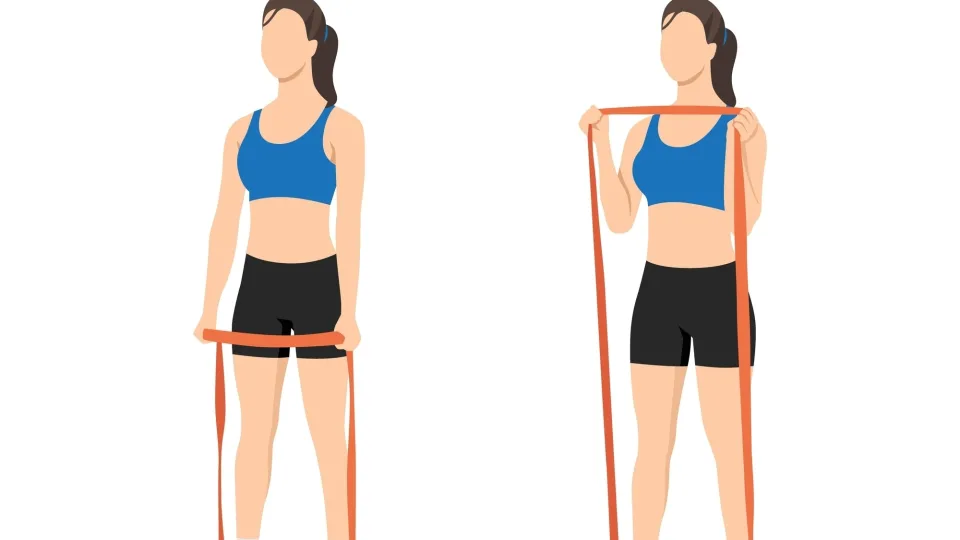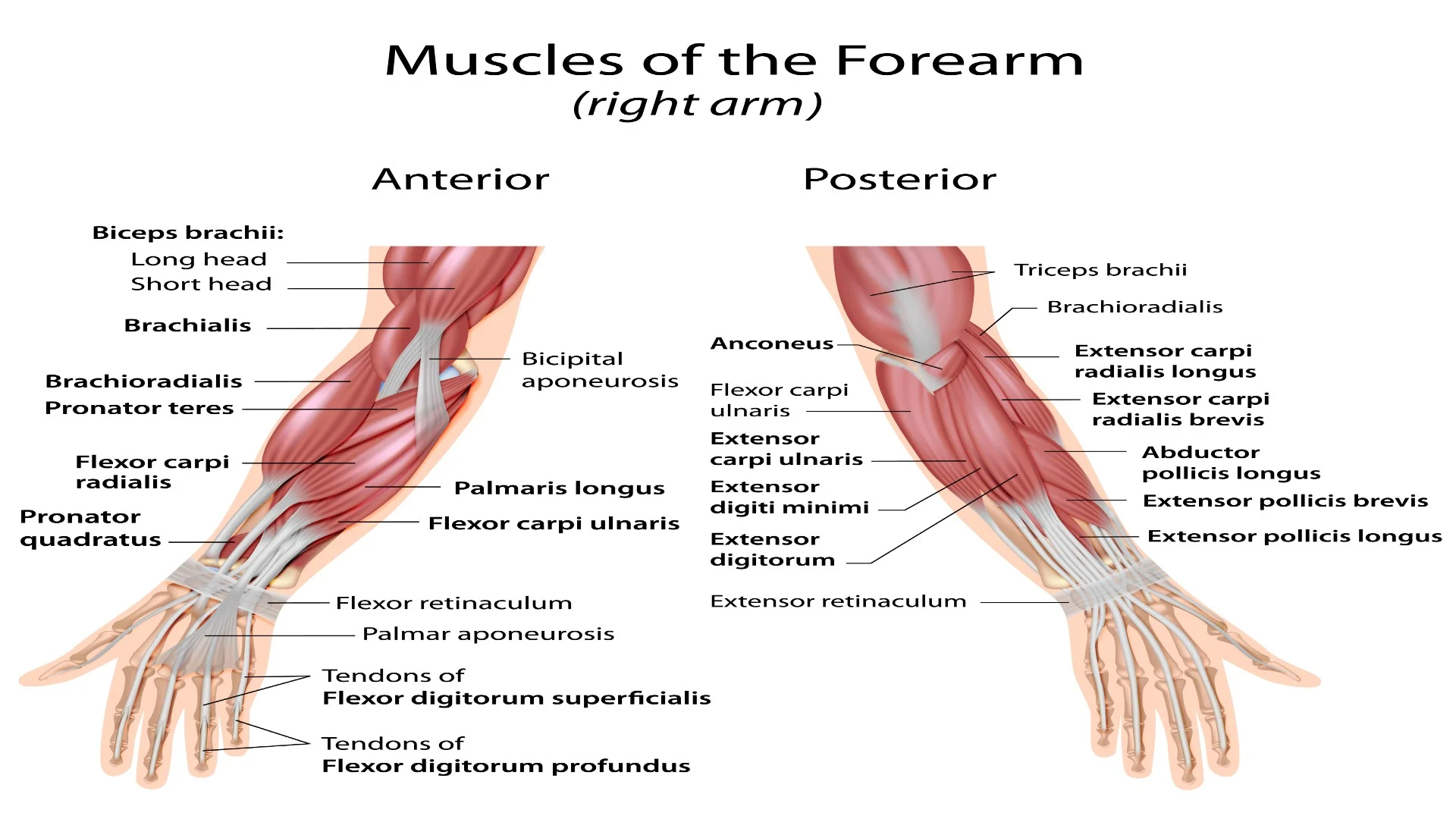Strengthen your biceps with these five arm exercises using a medium to heavy-duty resistance band.
If you’re still in the market for resistance bands, we’ve reviewed the top options available to help you make an informed choice, highlighting the best types for various workouts.
While these biceps exercises are great for strengthening and defining your arms, achieving bulk and shape involves more than just workouts. It’s essential to consider your diet and lifestyle, including adequate protein intake for muscle building, sufficient sleep, and consistent exercise that progressively challenges your muscles over time. Simply performing biceps exercises won’t yield significant benefits unless you adhere to these fundamental principles.
What is the best type of resistance band to use?
If you’re questioning the effectiveness of resistance bands, think again—they offer significant benefits and shouldn’t be considered merely as a backup option.
Generally, for building muscular endurance in your arms, we suggest using a lighter resistance band. This allows you to perform more reps and sets. Conversely, if your goal is to build stronger muscles by overloading them, choose a thicker band that provides greater resistance and intensity, and plan for fewer reps.
Understanding the fundamentals of hypertrophy versus strength training is crucial for tailoring an exercise program to your goals. This includes determining the frequency of training, as well as the appropriate number of sets, reps, and rest periods for building endurance, strength, or muscle mass. It’s important to note that the training regimen for each of these goals will vary significantly.
Top 5 Biceps Exercises Using a Resistance Band
Incorporate these exercises into your routine or use them for a comprehensive five-move arm workout by following the prescribed sets and reps listed below.
Bicep Curls with a Resistance Band

To perform biceps curls with a resistance band, you can use either a looped band or one with handles. Start by standing on the band with your feet hip-width apart, gripping the other end with an underhand grip. Ensure you stand upright, engage your core, and keep your back straight. Then, bend your elbows to pull the band toward your chest, keeping your elbows close to your sides. Pause briefly at the top of the movement, then gradually lower your arms back to the starting position.
To increase resistance and further target the muscle peak—the prominent bulge seen in well-developed biceps—try stepping your feet further apart or double-wrapping the band around your feet. This adjustment will intensify the exercise, helping you achieve more defined biceps.
3-4 sets x 8-12 reps
2. Hammer Curls with a Resistance Band

Use the same setup as the previous exercise, but for the hammer curls, hold your hands in a neutral grip, with your palms facing each other. This grip targets the biceps differently. Pull your hands toward your shoulders against the resistance of the band, hold briefly at the top, and then slowly lower your arms back to the starting position.
A simple change in hand position switches the emphasis on the muscles, targeting more of the long bicep head, brachialis and brachioradialis (forearm muscles).
3-4 sets x 8-12 reps
3. Resistance Band-Assisted Pull-Ups

To perform band-assisted pull-ups, secure a looped resistance band around a pull-up bar or a similar sturdy fixture. Place either your knee or foot through the loop of the band. The thickness of the band plays a crucial role here; a thicker band will provide more assistance, making the pull-up easier by supporting more of your body weight.
Grip the pull-up bar with both hands using an overhand grip, placing your thumbs around the bar and hands shoulder-width apart. Start by hanging from the bar with your arms fully extended. Brace your entire body, especially your core and legs, to prevent swinging. Pull yourself upward until your chin is above the bar, ensuring a smooth and controlled ascent. Pause briefly at the top, then slowly lower yourself back to the starting position, fully extending your arms as you descend. Maintain a tight core and steady legs throughout the exercise to maximize effectiveness and safety.
While pull-ups are primarily recognized as a back exercise, your biceps play a significant role in assisting the movement. To enhance your technique and safety, it’s beneficial to understand the distinctions between chin-ups and pull-ups, as well as common mistakes to avoid. Pull-ups target the posterior chain muscles, including the latissimus dorsi, teres major, posterior deltoids, trapezius, and core muscles, providing a compelling reason to incorporate them into your fitness routine.
3-4 sets x 8-12 reps
4. Seated Banded Preacher Curls
Preacher curls specifically target the short head of the biceps brachii, while also engaging the brachialis and brachioradialis muscles. For optimal setup, use a resistance band with handles. Secure the band by placing the tube under a door using a door anchor or wrapping it around a stable, immovable object like a squat rack. This setup ensures the band stays fixed, allowing you to focus on your form and the muscle contraction.
Sit on the ground facing the door or the object your band is anchored to, and move back until the band is taut. Position yourself with your knees bent and feet firmly planted on the ground. Rest your elbows on your knees to stabilize your upper body. Extend your arms and grip the handles or the band with an underhand grip. Slowly bend your elbows to curl the band towards your head, focusing on contracting your biceps. Pause briefly at the top of the movement, then slowly lower your arms back to the starting position, maintaining control throughout the exercise.
Ensure you brace your core throughout the exercise to stabilize your body. Move with controlled motions, and be mindful to keep your shoulders relaxed and down, avoiding any hunching. This will help maintain proper posture and maximize the effectiveness of the exercise.
3-4 sets x 8-12 reps
5. Reverse Grip Curls with Resistance Bands

As the name implies, reverse curls are performed by switching to a pronated grip—palms facing downward—as you curl the band. This variation primarily targets the forearms, specifically the brachioradialis. It’s essential to maintain a neutral wrist position throughout the exercise to avoid flexing or overextending your wrists as you lift the band. Follow the basic steps of a curl, but keep your wrists steady to maximize effectiveness and reduce the risk of injury.
3-4 sets x 8-12 reps
Bottom line

The biceps play a crucial role in various movements like pulling, elbow flexion, forward shoulder flexion, and wrist supination. Comprising two heads, the short and long, proper positioning of the elbow and shoulder can impact muscle targeting and activation levels of the biceps brachii.
In addition to the biceps brachii, the brachialis (main forearm flexor) and brachioradialis (another forearm muscle) are also key muscle groups engaged in these exercises. When designing your bicep-building program, consider targeting all the arm muscles involved to effectively sculpt and shape your biceps.
Unlike larger muscle groups such as the lats, glutes, or quads, the biceps are relatively smaller, making them more susceptible to overload with bands. Bands allow for resistance throughout both the concentric and eccentric phases of an exercise, ensuring constant tension on the biceps as you flex, pause, and extend.
Employing resistance bands maintains consistent muscular activation, ensuring engagement throughout the entire range of motion. Similar to utilizing dumbbells or kettlebells, you have the flexibility to select various resistance levels that match your individual ability and goals.
For those lacking multiple sets of bands, there are alternative methods to muscle building without heavy weights. These include manipulating variables such as sets (drop sets, supersets, or giant sets), reps, or rest intervals. Focus on controlling momentum, avoiding swinging, and concentrate on precise movements during both the lifting and lowering phases with your bands.
For an intensified workout experience, incorporate tempo training by slowing down each phase of the exercise, counting to three to five seconds. This deliberate pace enhances tension throughout the arms, making for a more challenging and effective session.





